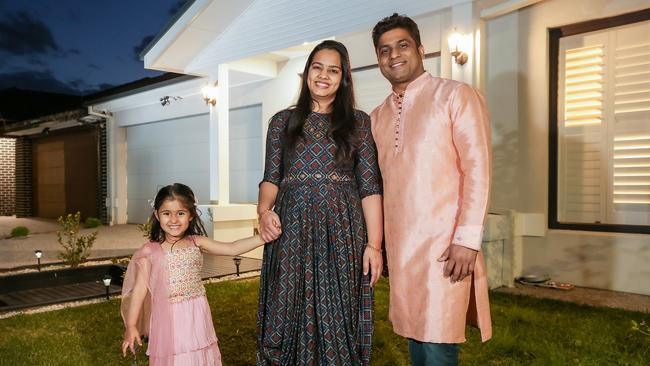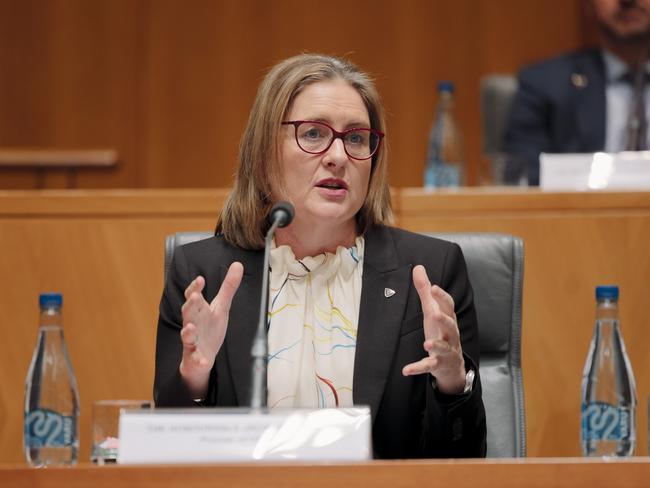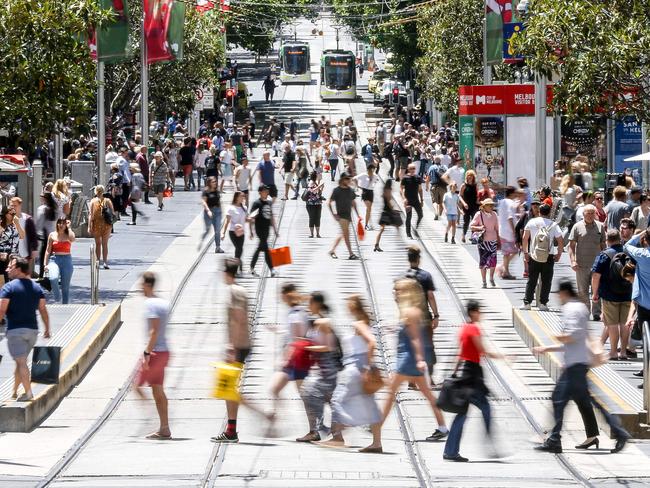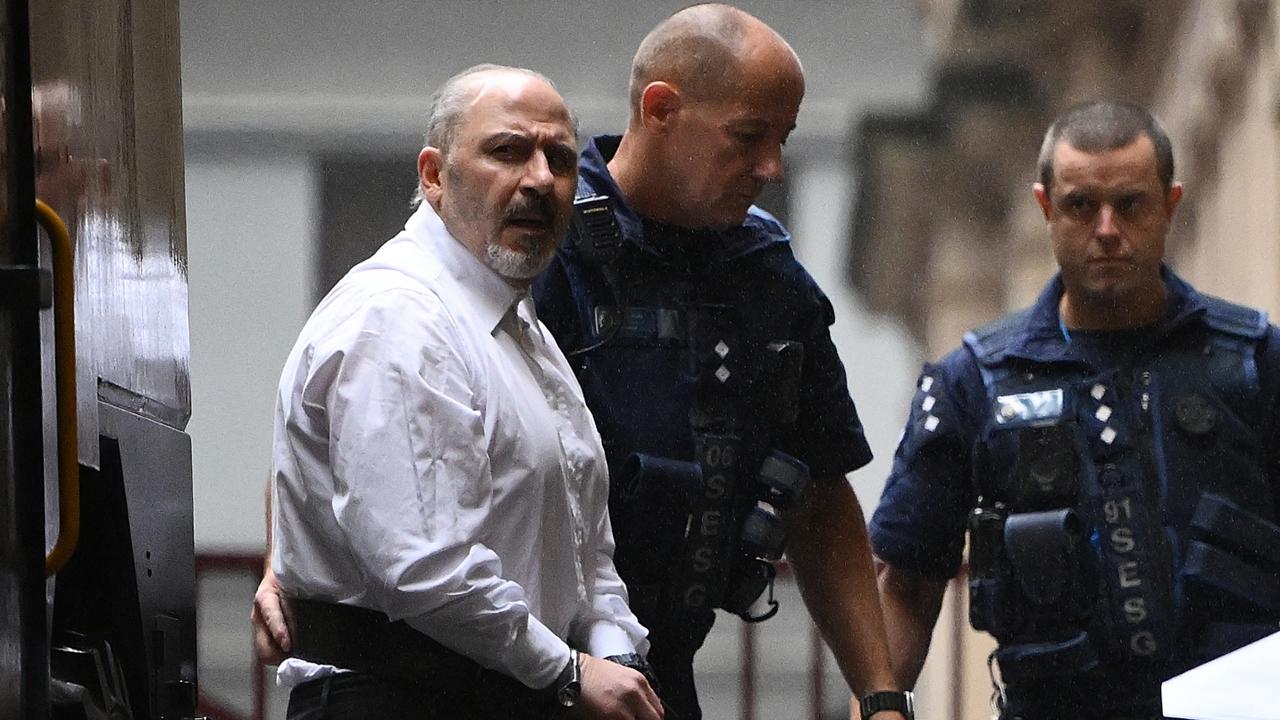ABS head of demography says Victoria is ‘very likely’ to have hit population of seven million
Population projections have revealed that Victoria has hit the seven-million milestone for the first time, with a huge number of overseas migrants moving to the state.

Victoria
Don't miss out on the headlines from Victoria. Followed categories will be added to My News.
Victoria’s population has hit seven million for the first time, according to fresh projections that reveal the state was on course to have reached the major milestone in early July.
The Australian Bureau of Statistics on Thursday released its quarterly population data, which estimates that Victoria’s population at March 31 was hovering at about 6.96 million.
But ABS head of demography Beidar Cho told the Herald Sun that Victoria is “very likely” to have since then clicked over to a population of more than seven million.
“At March 31, Victoria’s population was 6.959 million, requiring only 40,000 to get to seven million,” Ms Cho said, noting the state last year grew by about 92,000 in six months.
The milestone – which comes just eight years after Victoria’s population hit six million in 2016 – is expected to spark further debate about the state’s growing pains, with issues like housing and infrastructure dominating the political agenda.
It also comes two days after the Herald Sun revealed that the state’s spiralling housing crisis could cost the Allan government power, according to a new poll.

Since March last year, Victoria is estimated to have grown by about 184,000 people or 2.7 per cent, clocking the second fastest growth rate, behind Western Australia at 3.1 per cent.
With Thursday’s data focusing on the March quarter, Victoria is yet to officially hit the seven-million milestone due to a six-month delay.
However, demographers remain confident the milestone has been reached.
“Based on the population projection … Victoria would have reached seven million people in the second week of July,” Ms Cho said.
Another demographer also told the Herald Sun that on all the evidence, Victoria has “already hit seven million”.
In 2017, prior to the pandemic, the ABS projected that Victoria would reach seven million in 2022.
But experts say despite this, the state still hit the milestone relatively fast.
Australian Population Research Institute founding director Bob Birrell said Victoria’s population had been “accelerating”.
“There’s been a huge surge in net overseas migration and Victoria’s getting a high share of that overseas migration, so that’s the main driver of this growth,” Dr Birrell said.
He added: “Melbourne already has a high share of overseas migrants and they tend to locate where their relatives and co-community members live.
“But the main driver of recent overseas migration was temporary migration, people arriving on temporary visas, particularly international students.”
It remains to be seen how the federal government’s caps on international students will affect the population moving forward.

Demographer Mark McCrindle agreed it was a fast leap from six to seven million, telling the Herald Sun back in June that he believed Victoria’s population would reach the milestone in about July.
The ABS also revealed that Australia’s population officially passed 27 million in March, with net overseas migration driving 83 per cent of the past year’s growth.
Ms Cho said the “medium projections scenario” generated by the ABS now showed Victoria could reach eight million in 2034.
To arrive at its projections, the ABS analyses natural increase (births minus deaths), net overseas migration and net interstate migration (interstate arrivals minus interstate departures).
According to the population clock run by the ABS, Victoria’s population is currently estimated to increase by one person every 3 minutes and 3 seconds, with one birth every 7 minutes and 4 seconds and one death every 11 minutes and 20 seconds.
By analysing migration data, the ABS clock also estimates that one person arrives to live in Victoria every 2 minutes and 33 seconds, while one Victorian resident leaves to live overseas every 8 minutes and 25 seconds.

Rishabh Sharma and his wife Neha, from Berwick, migrated to Australia in 2018 and have since welcomed their daughter Yashvi, 3.
More than 90,000 people born in India arrived in Victoria between 2016 and 2021 to help the state surge towards seven million.
Indians overtook the English to become Victoria’s biggest migrant community by 2020, with Premier Jacinta Allan in India this week to strength the state’s ties with the nation.
Mr Sharma, from Lucknow in India’s north, said he had witnessed a “surge” in Indian migrants, especially to fill skill shortages.
“And they can secure their first home easily if they compare to Sydney, because the price is quite high there,” he said.
According to the latest regional population data – released in March by the ABS – Greater Melbourne increased by 167,500 people (3.3 per cent) from March last year.
Our population, explained
Why hasn’t Victoria officially hit a population of seven million people?
It’s complex, but let’s try to break it down.
The Australian Bureau of Statistics release national, state and territory population data every quarter, but essentially with a six-month delay.
This means that statistics released by the ABS on Thursday relate to the March quarter, covering off January, February and March.
Put simply, it would be too difficult for the ABS to collate all the statistics for the months of July, August and September – and then release them by September’s end.
But the six-month delay comes in handy too.
It takes awhile to figure out exactly how many babies were born or how many people passed away in any given quarter because registrations with Births, Deaths and Marriages are often delayed.
Registrations could be delayed because people’s loved ones are slow to submit the correct information or the registry is slow to process the information.
Interstate migration can also be difficult to pin down.
Despite this, the ABS is able to use the statistics to make population projections.
And according to the current projections, the state would have reached seven million in early July.




